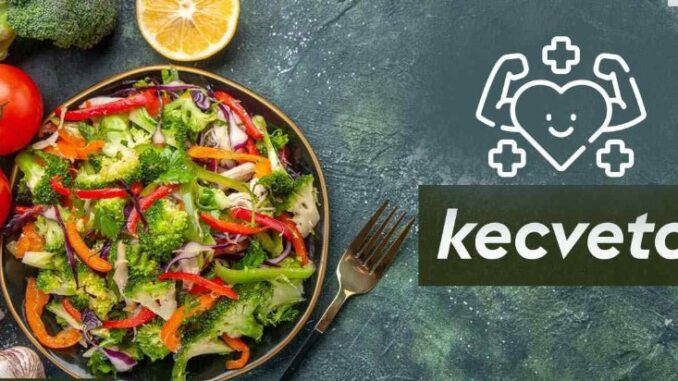Introduction
Understanding Data Security and Privacy
Data security entails protecting data from unauthorized access and cyber threats, whereas data privacy focuses on the proper handling of user information, such as how it is gathered, shared, and maintained. Both factors are crucial in mobile app development to keep users safe and trusting. Understanding these concepts is the first step in developing a safe and privacy-compliant mobile app.
Common Data Security Threats
Mobile apps face various data security threats that can compromise user information and app functionality. Some of the most common threats include:
Malware and Viruses: Malicious software is intended to cause harm, disruption, or unauthorized access to computer systems. Malware in food truck apps can disrupt service, steal client information, and even influence transactions.
Phishing Attacks: Deceptive attempts to obtain sensitive information, such as usernames, passwords, and credit card information, by impersonating a legitimate company. These assaults can result in massive data breaches if workers or users are fooled into disclosing sensitive information.
Data Breaches: Unauthorized access to personal data might result in misuse or disclosure. Data breaches can occur via a variety of methods, including hacking, social engineering, and even insider threats.
Insecure Data Storage: Storing data without proper security measures exposes it to theft and unauthorized access. This could include unprotected databases, incorrect server setups, or unsafe cloud storage options.
Privacy Concerns for Food Truck Mobile Apps
Privacy problems in food truck mobile apps center on user data collection, storage, and sharing. The key issues include:
User Data Collection: Collecting personal information such as names, addresses, and payment information. It is critical that only relevant information is collected and retained securely.
Location Tracking: Monitoring user locations to improve delivery and service efficiency. While valuable for improving service, it creates privacy problems if users are not properly informed or the data is not appropriately protected.
User Consent: Ensuring that consumers are aware of and consent to data collection and usage procedures. This includes providing clear and understandable consent forms and making it easy for users to opt in or out of data collecting.
Data Sharing with Third Parties: Sharing user information with third parties can pose privacy hazards if not managed appropriately. It is critical to establish strong data sharing agreements and verify that third parties follow the same privacy standards.
Regulatory Requirements
Compliance with regulatory requirements is essential for ensuring data security and privacy. Key regulations include:
GDPR (General Data Protection Regulation): The European regulation establishes criteria for the acquisition and processing of personal data. GDPR expresses user consent for data gathering and gives users control over their data, including the right to access, correct, and remove it.
CCPA (California Consumer Privacy Act): California rule that gives customers control over their personal data and requires corporations to comply with data privacy laws. The CCPA provides for transparency in data processing and allows customers to opt out of data sales.
HIPAA (Health Insurance Portability and Accountability Act): Regulations for protecting health information, which apply if your app handles health-related data. HIPAA establishes health information protection regulations, as well as data security and privacy restrictions.
Other Relevant Regulations: Additional regulations may apply based on the region and industry requirements. To avoid legal penalties, it is critical to stay up to date on applicable rules and assure compliance.
Best Practices for Data Security
Implementing best practices for data security is crucial to protect user information. These include:
Encryption Methods: Using powerful encryption methods to safeguard data at rest and in transit. This ensures that even if data is intercepted, it cannot be easily read or manipulated.
Secure APIs: Ensure that APIs are safely configured and routinely scanned for vulnerabilities. APIs are frequently targeted by attackers, thus adequate authentication and encryption are critical.
Regular Security Audits: Conducting periodic reviews to identify and address security weaknesses. This involves testing for vulnerabilities, reviewing code and configurations, and implementing fixes as needed.
User Authentication and Authorization: Implementing effective procedures for verifying user identities and controlling access to sensitive data. This may incorporate multi-factor authentication, role-based access controls, and session management.
Best Practices for Data Privacy
To safeguard user privacy, developers should adhere to the following best practices:
Data Minimization: Collecting only the data required for app functionality while limiting the amount of personal information retained. This lowers the danger of data breaches while also ensuring compliance with privacy standards.
Anonymization Techniques: Protecting user privacy by removing identifiable information from their data. User identities can be protected using techniques like pseudonymization and aggregation.
Transparency in Data Handling: Clearly communicating data practices to users and giving them control over their personal information. This includes developing clear privacy policies and giving tools for consumers to manage their data.
User Control over Personal Data: Users can access, amend, and delete their data as needed. Giving users control over their data promotes confidence and compliance with privacy requirements.
Implementing Security Measures
Effective security measures are vital for protecting user data. These include:
Secure Coding Practices: Developing code that is resistant to typical vulnerabilities like SQL injection and cross-site scripting. Secure coding methods help to prevent numerous forms of attacks and ensure that the software works as intended.
Regular Updates and Patch Management: Keeping software up to speed with new security patches and updates. This protects against newly identified vulnerabilities and assures the app’s security over time.
Security Testing: Regular security testing to detect and remedy issues. This may include penetration testing, vulnerability scanning, and code reviews.
Incident Response Plan: Create a strategy for responding to security incidents swiftly and efficiently. This includes detecting and containing the breach, contacting affected users, and taking precautions to avoid repeat instances.
Implementing Privacy Measures
Privacy measures should be integrated into the app development process:
Privacy by Design Principles: Create a strategy for responding to security incidents swiftly and efficiently. This includes detecting and containing the breach, contacting affected users, and taking precautions to avoid repeat instances.
Creating a Privacy Policy: Create a clear and thorough privacy policy outlining data collecting, usage, and sharing procedures. Users should have easy access to the privacy policy, and it should be updated on a regular basis to reflect changes in data practices.
User-Friendly Consent Mechanisms: Providing clear and simple ways for consumers to agree to data collection and use. This can include pop-up notifications, consent forms, and simple options for controlling data preferences.
Data Access and Deletion Requests: Allowing users to view and delete their data. This promotes user trust while still ensuring compliance with privacy requirements.
Technical Specifications
Implementing robust technical specifications is essential for securing data:
Encryption Algorithms: Using strong encryption methods such as AES (Advanced Encryption Standard) and RSA (Rivest-Shamir-Adleman) to protect data. These algorithms are widely recognized for their security and effectiveness in protecting sensitive information.
Secure Communication Protocols: Ensuring secure communication through protocols such as HTTPS (Hypertext Transfer Protocol Secure) and SSL/TLS (Secure Sockets Layer/Transport Layer Security). These protocols encrypt data during transmission, protecting it from interception and tampering.
Authentication Methods: Implementing secure authentication methods such as OAuth (Open Authorization) and JWT (JSON Web Tokens) to verify user identities. These methods help ensure that only authorized users can access sensitive data and functionalities.
Secure Data Storage Solutions: Using secure data storage solutions that protect data both at rest and in transit. This can include encrypted databases, secure cloud storage services, and proper server configurations.
Applications in the Food Truck Industry
Enhanced data security and privacy can significantly benefit various applications within the food truck industry:
Online Ordering Systems: Ensuring that customer orders and payment information are securely processed and stored. This builds trust with customers and protects sensitive data from breaches.
Payment Processing: Implementing secure payment gateways to protect financial transactions. This includes using encryption, secure APIs, and compliance with payment security standards such as PCI-DSS (Payment Card Industry Data Security Standard).
Customer Relationship Management (CRM): Protecting customer data in CRM systems to build and maintain trust. This involves securing customer information and ensuring that it is used responsibly.
Inventory Management: Securing inventory data to prevent theft and ensure accurate tracking. This includes protecting information about stock levels, supplier details, and order histories.
Benefits of Enhanced Security and Privacy
Implementing robust security and privacy measures offers numerous benefits:
Increased User Trust: Demonstrating a commitment to protecting user data builds trust and loyalty. Users are more likely to engage with and recommend apps that prioritize their security and privacy.
Compliance with Regulations: Meeting legal requirements and avoiding penalties for non-compliance. This ensures that the app operates within legal boundaries and avoids costly fines and legal issues.
Reduced Risk of Data Breaches: Minimizing the likelihood of data breaches and their associated costs. This includes protecting against financial losses, reputational damage, and legal liabilities.
Competitive Advantage: Differentiating your app by prioritizing user security and privacy. This can attract more users and set your app apart in a competitive market.
Challenges and Limitations
Implementing data security and privacy measures can pose challenges, such as:
Cost of Implementing Security Measures: Investing in security technologies and practices can be expensive. This includes costs for software, hardware, and ongoing maintenance and monitoring.
Balancing Usability and Security: Ensuring security without compromising user experience. It’s important to find a balance that protects user data while maintaining a seamless and intuitive user interface.
Keeping Up with Evolving Threats: Staying ahead of new and emerging security threats. This requires ongoing vigilance, monitoring, and adaptation to new threats and vulnerabilities.
User Education and Awareness: Educating users about security practices and the importance of protecting their data. This involves providing clear and accessible information about security features and best practices.
Latest Innovations in Data Security and Privacy
The field of data security and privacy is continually evolving with new innovations, including:
AI and Machine Learning for Threat Detection: Using advanced algorithms to detect and respond to security threats in real-time. AI and machine learning can identify patterns and anomalies that may indicate potential security breaches.
Blockchain Technology for Secure Transactions: Leveraging blockchain for secure and transparent transactions. Blockchain technology provides a decentralized and tamper-proof method for recording transactions, enhancing security and trust.
Advanced Biometric Authentication: Implementing biometric methods such as fingerprint and facial recognition for enhanced security. Biometric authentication provides a highly secure and user-friendly method for verifying identities.
Zero Trust Security Model: Adopting a security model that assumes no trust, continuously verifying user identities. The Zero Trust model ensures that all access requests are thoroughly vetted, reducing the risk of unauthorized access.
Future Prospects
The future of data security and privacy in mobile apps is promising, with trends and developments such as:
Trends in Mobile App Security and Privacy: Increasing focus on privacy-preserving technologies and practices. This includes the development of new tools and methodologies for protecting user data.
Potential Regulatory Changes: Anticipating new regulations and adapting to evolving legal requirements. Staying informed about regulatory changes helps ensure ongoing compliance and preparedness.
Emerging Technologies and Their Impact: Exploring the impact of new technologies such as quantum computing on data security. Emerging technologies can introduce both new opportunities and new challenges for data protection.
Case Studies
Examining case studies can provide valuable insights into successful security implementations and lessons learned from data breaches:
Successful Implementation of Security Measures in Food Truck Apps: Highlighting best practices and outcomes. These case studies demonstrate effective strategies for protecting user data and ensuring app security.
Lessons Learned from Data Breaches in Similar Industries: Understanding common pitfalls and how to avoid them. Analyzing data breaches helps identify vulnerabilities and improve security practices.
Best Practices from Leading Food Truck Mobile Apps: Learning from industry leaders and their approaches to security. These best practices provide valuable guidance for implementing effective security measures.
Expert Insights
Gaining perspectives from experts can enhance understanding and application of security measures:
Quotes from Cybersecurity Experts: Insights from professionals on best practices and emerging trends. Expert opinions provide valuable knowledge and recommendations for improving security.
Interviews with Food Truck App Developers: Practical advice and experiences from developers in the field. These interviews offer real-world insights into the challenges and solutions for securing food truck apps.
Advice from Regulatory Compliance Professionals: Guidance on navigating and adhering to regulatory requirements. Compliance professionals provide expertise on ensuring that apps meet legal standards for data security and privacy.
User Guides and Tutorials
Providing practical guides and tutorials can help developers implement security and privacy measures effectively:
Step-by-Step Guide to Securing Your Mobile App: Detailed instructions for enhancing app security. This guide covers essential steps and best practices for protecting user data.
Best Practices for Data Privacy in App Development: Tips for ensuring privacy in development. This includes strategies for incorporating privacy considerations into the design and development process.
How to Perform a Security Audit: Guide to conducting thorough security audits. This tutorial provides step-by-step instructions for identifying and addressing security vulnerabilities.
Conclusion
Data security and privacy are important components of any successful food truck mobile app. App developers, including those at custom food delivery app development company, can protect user data, generate trust, and gain a competitive advantage by following best practices, complying with legal regulations, and staying up to date on the newest technologies and trends. Continued education and vigilance are critical for maintaining strong security and privacy safeguards.




